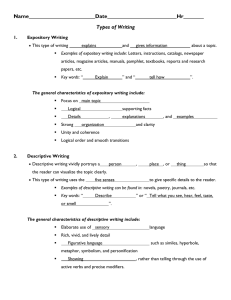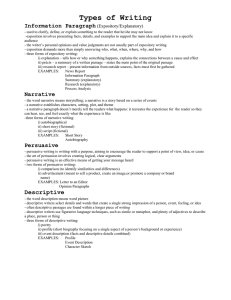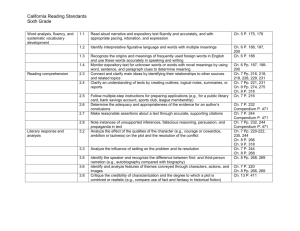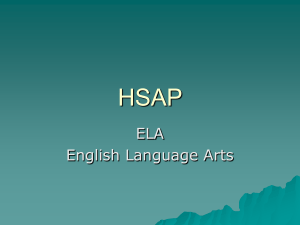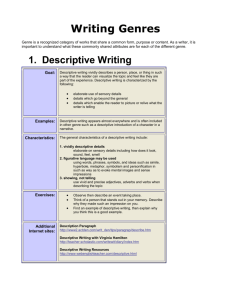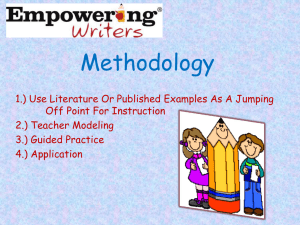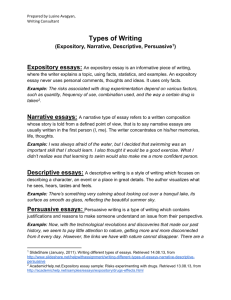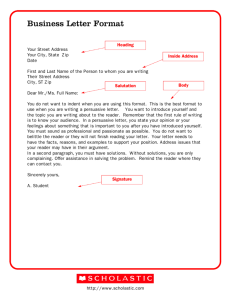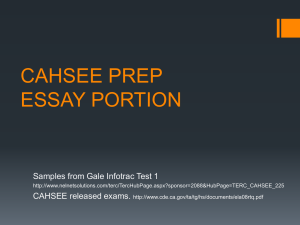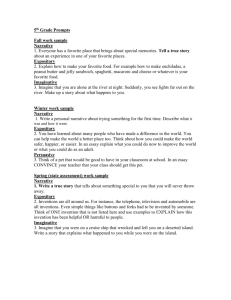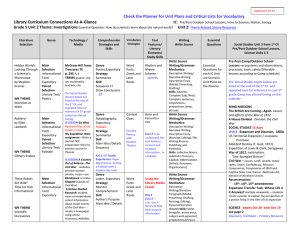descriptive writing
advertisement
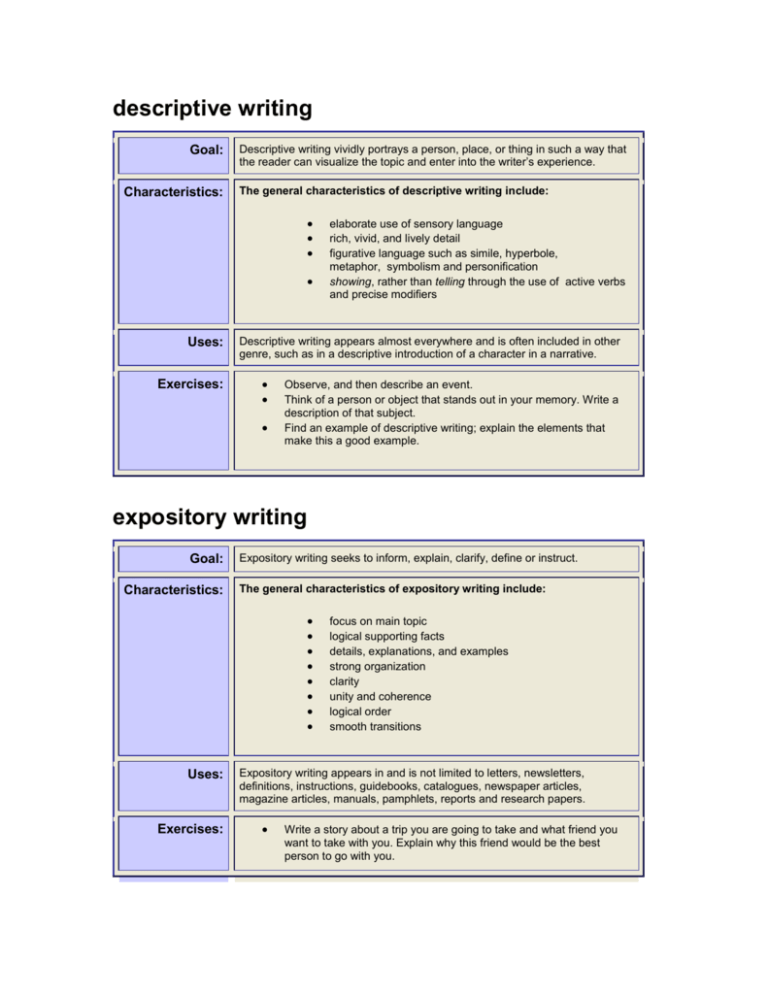
descriptive writing Goal: Characteristics: Descriptive writing vividly portrays a person, place, or thing in such a way that the reader can visualize the topic and enter into the writer’s experience. The general characteristics of descriptive writing include: Uses: Exercises: elaborate use of sensory language rich, vivid, and lively detail figurative language such as simile, hyperbole, metaphor, symbolism and personification showing, rather than telling through the use of active verbs and precise modifiers Descriptive writing appears almost everywhere and is often included in other genre, such as in a descriptive introduction of a character in a narrative. Observe, and then describe an event. Think of a person or object that stands out in your memory. Write a description of that subject. Find an example of descriptive writing; explain the elements that make this a good example. expository writing Goal: Characteristics: Expository writing seeks to inform, explain, clarify, define or instruct. The general characteristics of expository writing include: Uses: Exercises: focus on main topic logical supporting facts details, explanations, and examples strong organization clarity unity and coherence logical order smooth transitions Expository writing appears in and is not limited to letters, newsletters, definitions, instructions, guidebooks, catalogues, newspaper articles, magazine articles, manuals, pamphlets, reports and research papers. Write a story about a trip you are going to take and what friend you want to take with you. Explain why this friend would be the best person to go with you. Describe the cause and effects of pollution in the environment. Narrow your topic to one form of pollution, such as something that causes air, water or land pollution. Explain the process of baking a birthday cake. Find an example of expository writing; explain the elements that make this a good example. narrative writing Goal: Characteristics: Narrative writing tells a story or part of a story. The general characteristics of narrative writing include: Uses: Exercises: plot structure o introduction o rising action o climax o falling action o resolution conflict characterization setting theme point of view sequencing transitions Narrative writing appears in and is not limited to novels, short stories, biographies, autobiographies, historical accounts, essays, poems, and plays. Write a story about the best celebration you have ever had; tell why this is your favorite. Think of a time when you were nervous. It might be your first plane ride or the first time you slept over night with a friend. Tell what happened and how you reacted. Write a fictional story about being an eyewitness at a historical event. Find an example of a narrative; explain the elements that make this a good example. persuasive writing Goal: Characteristics: Persuasive writing intends to convince the reader of a stated opinion or belief. The general characteristics of persuasive writing include: Uses: Exercises: stated position or belief factual supports persuasive techniques logical argument call to action Persuasive writing appears in and is not limited to speeches, letters to the editor, editorials, advertisements, award nominations, pamphlets, petitions, scholarly writing, and opinion pieces. Write a letter to your member of parliament telling him why you think daylight savings time should or should not be changed. Write a speech to be delivered to the school board to convince them to require or not require school uniforms. Find an example of persuasive writing; explain the elements that make this a good example. poetry Goal: Characteristics: Poetry is an art form that uses evocative language and form to communicate an idea or an experience. Because it is highly individual, the structure and elements are varied and unlimited in scope. The general characteristics of poetry may include: Uses: Exercises: figurative language rhyme and euphony meter poetic devices free verse blank verse Poetry appears almost everywhere, and examples include haiku, couplet, tercet, quatrain, cinquain, limerick, ballad, lyrics, sonnet, etc. During a walk, pick up one item. Write about what you found. Write about something you miss or crave. For example, in winter write about summer. technical writing Goal: Characteristics: The goal of technical writing is to clearly communicate a select piece of information to a targeted reader or group of readers for a particular purpose in such a way that the subject can readily be understood. It is expository writing that requires a response from the reader. The general characteristics of technical writing may include: Uses: Exercises: objective point of view clear, concise language factual information uncomplicated structure logical order identified audience Technical writing appears in reports such as lab, accidents or progress reports, directions to a destination, manuals, evaluation forms and questionnaires, business letters, resumes, presentations, descriptions of the design and features for new products, and instructions that help the reader visualize what they are doing and what they are working with. write, in complete sentences or a paragraph, to explain what you did wrong in solving a math problem. create a product then describe how your product works to prospective buyers! Other ideas: Action/Adventure Biographical Fantasy History Horror/Scary How-To/Advice Humour Inspirational Mystery News Opinion Research Review (book, movie, web site) Romance/Love Sci-fi Scientific Sports Thriller/Suspense Travel

